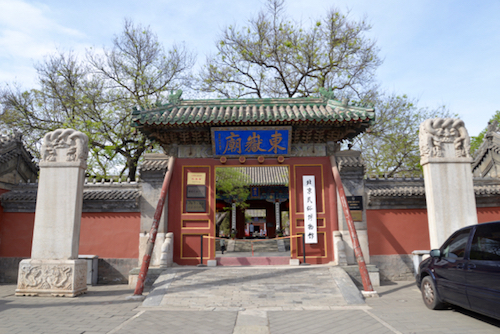In working through my Beijing bucket list, I often forget there are places worth seeing right in my own backyard. A friend recently inspired me to visit Dongyue Temple, a Yuan Dynasty-era Taoist temple located in the heart of Chaoyangmen.
I dropped by on a beautiful spring afternoon and was rewarded with serene courtyards, stately old scholar trees, a repository of stone tablets spanning different eras, and hundreds of plaster statues depicting the 76 departments of the Taoist supernatural world – some macabre, many hilarious, and all fascinating in their variety and inadvertent campiness.
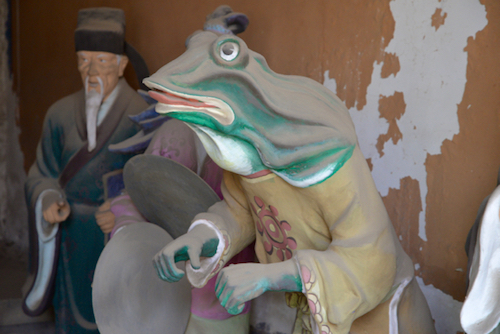
According to The Search for a Vanishing Beijing: A Guide to China’s Capital Through the Ages (2008), the cubicles depict scenes of reward and punishment overseen by Taoist deities who double as functionaries within this supernatural bureaucracy.
“The departments span everything: wealth, longevity, health, betrayal, poisoning, lust, cruelty to animals, plagues, boils, suicide, and the suppression of schemes,” writes author M.A. Aldrich.
Wryly, he muses that the deities do not have the authority to issue a ruling themselves; instead, the final verdict must be ratified by an “approval department” within the Taoist bureaucracy. In China, it seems, even the gods cannot escape red tape.

Dedicated to the God of Taishan – the most important of the Five Sacred Mountains of Taoism – the nearly 700-year-old temple is divided into three courtyards anchored by three main structures: Zhandaimen Archway, Daiyue Hall, and Yude Hall.

The first courtyard features a long walkway leading to Daiyue Hall, Daiyue being a synonym for “Taishan.” Two symmetrical structures flank the walkway (just visible in the above photo); they contain massive stone tablets inscribed by Emperors Kangxi and Qianlong.

Daiyue Hall contains a towering statue of the God of Taishan, known in Chinese as Dongyue Dadi (东岳大帝).
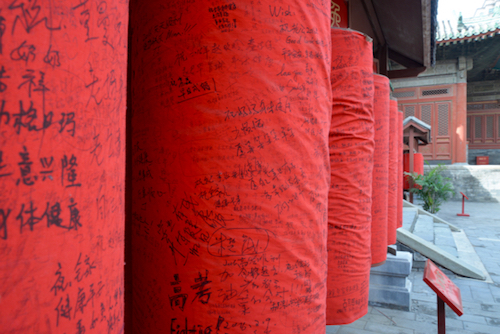

The first courtyard also contains 90 stone tablets from the Yuan, Ming, and Qing Dynasties.

The most famous one features an inscription by Yuan Dynasty scholar, painter, calligrapher, and prince Zhao Mengfu (1254-1322). It recounts the life of Zhang Liusun, the founder of Dongyue Temple, as well as milestones in the temple’s history.

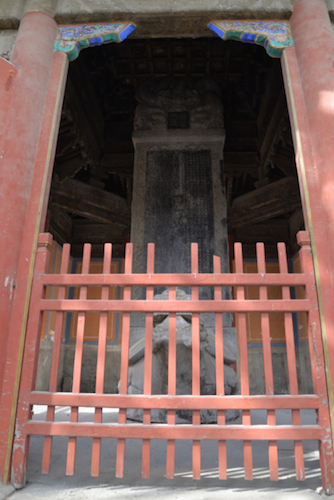

In front of the tablet inscribed by Emperor Kangxi, there is a bronze donkey with the head of the horse – translated by the temple as “Bronze Wonder Donkey” – popular with those seeking good health. To heal your affliction, simply rub the corresponding body part on the donkey.

The donkey’s counterpart is the White Jade Horse, the steed of Wenchang. Touching it is said to assure success and safe travels.



Near the entrance is the Longevity Tree, a Chinese scholar tree (槐树 huai shu) believed to be older than Dongyue itself. Due to its age, its trunk has already hollowed out and the tree was singled out for conservation in 2003.

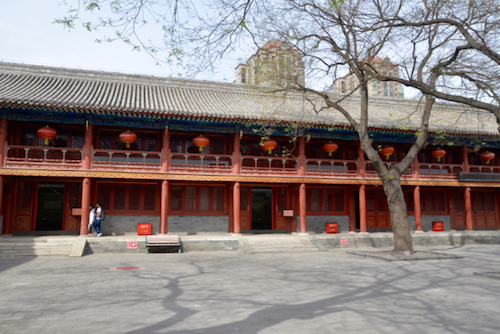
The rooms along the innermost courtyard currently house an exhibition dedicated to the 12 Chinese zodiac signs. Each animal has its own display of antique tableware, tablets, and other objects, but the text is unfortunately only in Chinese.
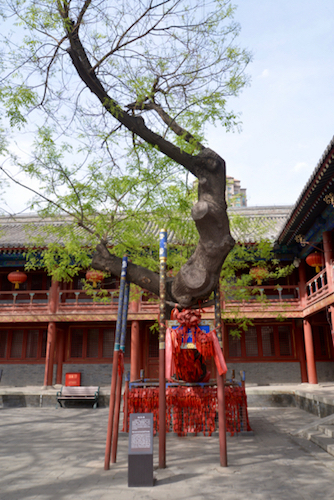
The courtyard also contains the Scholar Tree, Dongyue Temple’s other sacred tree. It is tied to Wenchang, the Taoist patron god of scholars and writers. In ancient times, applicants to the imperial examinations would visit Dongyue Temple to pray for good results at the Wenchang Pavilion.
All in all, Dongyue Temple provided a welcome break from the hustle and bustle of downtown Beijing. I wouldn’t go out of my way to bring visitors here (unless they have a special taste for bizarre statues), but it’s worth a visit if you happen to be near Chaoyangmen, Gongti, or Ritan.
Public restrooms with squat toilets are available onsite, but there was no toilet paper or soap when I visited. There is no food for sale on or near the premises, but the temple is about a 10-minute walk from U-Town Mall, which has a Burger King and a Starbucks.
Consider yourself warned: Dongyue Temple is not suitable for families with young children. Besides the many statues of demons and monsters, a few of the departments are downright disturbing, depicting scenes of disembowelment, decapitation, and implied animal cruelty. That said, older kids and teens will probably find the poorly-made cartoon violence more laughable than anything else.
Dongyue Temple 东岳庙
RMB 10. Daily 8.30am-4.30pm. 141 Chaoyangmen Waidajie, Chaoyang District (6551 3883) 朝阳区朝阳门外大街141号
Sijia Chen is a contributing editor at beijingkids and a freelance writer specializing in parenting, education, travel, environment, and culture. Her work has appeared in Travel + Leisure, The Independent, Midnight Poutine, Rover Arts, and more. Follow her on Twitter at @sijiawrites or email her at sijiachen@beijing-kids.com.
Photos: Sijia Chen

